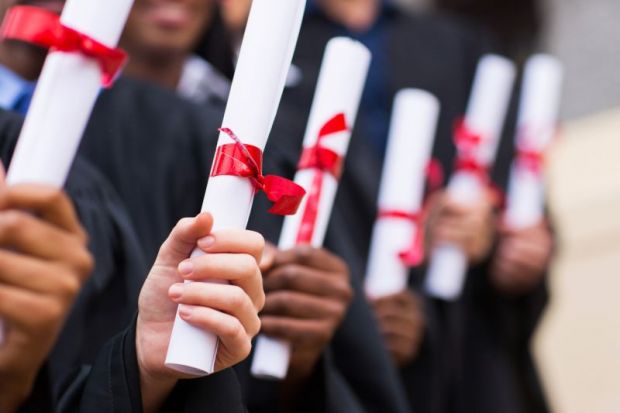Degree-educated Australians are now most likely to be in their late 30s rather than their late 20s, and the higher education gender gap has doubled in 10 years, as a decade-old spike in university study remoulds the country’s demographics.
New data show that Australia has easily achieved one of the key goals underpinning the 2012 switch to demand-driven university funding. About 43 per cent of Australians aged between 25 and 34 now have degrees, up from 29 per cent before former University of South Australia vice-chancellor Denise Bradley’s transformative review of Australian higher education.
Professor Bradley cited higher education attainment levels that were slipping behind international benchmarks as one of the main reasons for uncapping undergraduate places. She advised the then Labor government to adopt a target of 40 per cent of the 25-34 year-old age cohort having higher education qualifications by 2020, although the government opted for a more conservative time frame of 2025.
An Australian Bureau of Statistics survey, which provides an annual snapshot of higher education attainment levels, suggests that Labor’s caution was unwarranted. Forty-eight per cent of women aged 25 to 29, and 50 per cent of those in the 30- to 34-year-old bracket, now have degrees.
Men are also closing in on the target, with more than 36 per cent of the cohort now degree-qualified. Ten years ago, when the government relaxed enrolment caps for most undergraduate courses before jettisoning them two years later, just 30 per cent of men and 38 per cent of women in the 25- to 34-year-old age group had degrees.
The most highly educated cohort is now aged between 35 and 39, with 41 per cent of men and 52 per cent of women boasting degrees – compared with 27 and 32 per cent respectively in 2010.
That year, the most highly qualified age cohorts were 25- to 29-year-old males and 30- to 34-year-old females. Women have been the main beneficiaries of the Bradley reforms, with the gender gap between degree-qualified adults doubling from four to eight percentage points.
While the city-bush divide in higher education attainment has narrowed, people in urban areas remain far more likely to have degrees than their country counterparts. Thirty-nine per cent of adults in the major cities have higher education qualifications, compared with between 17 and 22 per cent in regional and remote areas.
More equitable university participation was also a goal of the Bradley reforms, with the then government adopting a target of 20 per cent of students coming from the most socio-economically disadvantaged quartile of the population by 2020.
That will not be met, figures from the National Centre for Student Equity in Higher Education suggest. While enrolments from low socioeconomic status students grew at double the national average between 2014 and 2019, their share of domestic undergraduate places rose by just one percentage point to about 17 per cent – and has declined marginally since 2017, when the Coalition government reimposed caps on university places.
And while indigenous people’s enrolments doubled in the decade to 2019, their 1.9 per cent share of university places still lags well behind their 3.1 per cent share of Australia’s population.
Universities Australia has launched an indigenous student recruitment campaign to coincide with Naidoc week, an annual celebration of Aboriginal and Torres Strait Islander culture. “It’s not always easy to see a pathway to uni, particularly for those who are the first in their family to consider higher education,” said chief executive Catriona Jackson.




